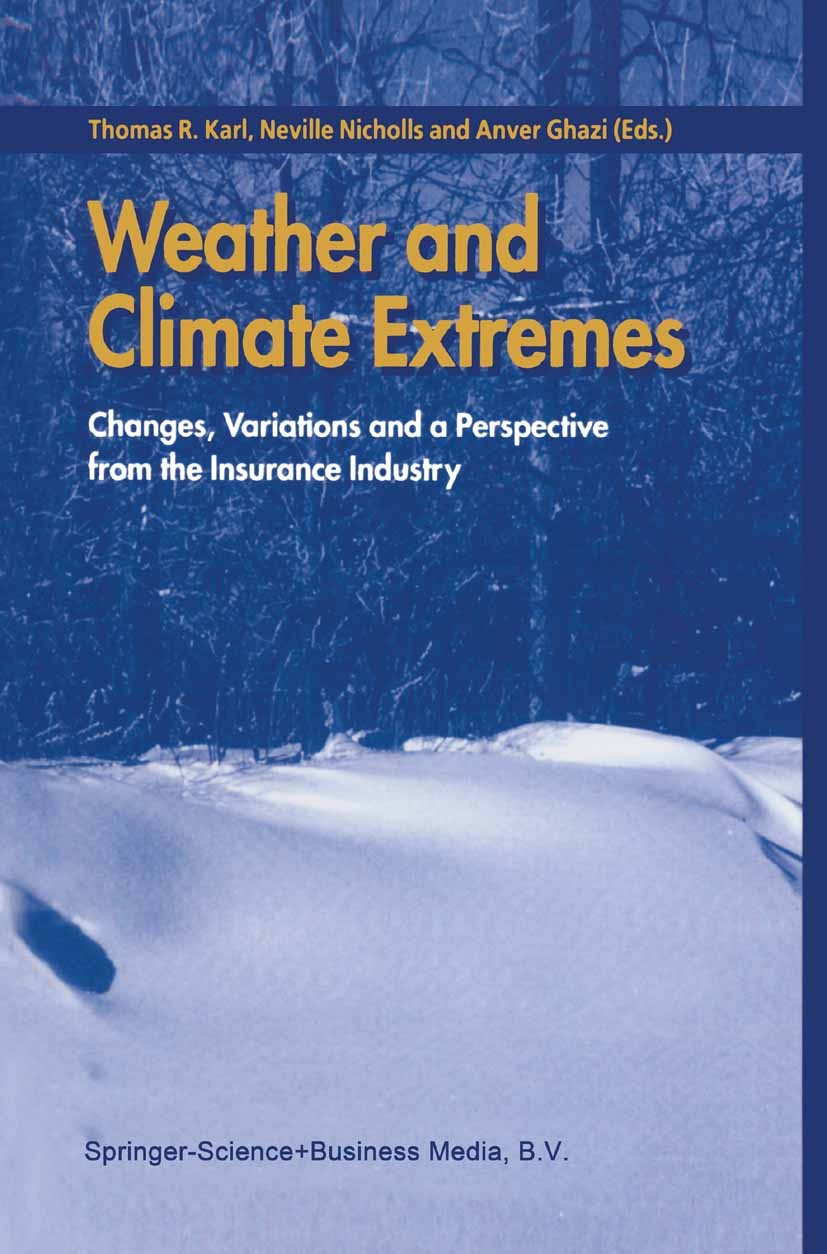气溶胶强迫对热浪统计归因的影响
IF 6.9
1区 地球科学
Q1 METEOROLOGY & ATMOSPHERIC SCIENCES
引用次数: 0
摘要
由于人为气候变化,热浪正变得越来越频繁和强烈。准确地确定其发生概率和强度的变化对有效的气候变化适应战略至关重要。在观测中计算热浪重现期的一种常见做法依赖于极值统计,其中广义极值分布(GEV)随全球平均温度(GMT)的协变量线性移动,以捕获气候变化的全球强迫响应(“标准方法”,从现在开始)。虽然这种方法通常是有效的,但它没有明确地包括区域气溶胶趋势,而气溶胶趋势通过反射太阳辐射和改变云的性质而强烈地影响当地的极端高温。根据地区的不同,气溶胶强迫趋势可以放大或抵消温室气体引起的变暖。本文利用社区地球系统模式2 (CESM2)大集合和单一强迫大集合的气候模式模拟,评估了区域气溶胶趋势对热浪统计极端事件归因的影响。为了检验气溶胶对极端事件趋势的影响,我们在GEV模型中引入气溶胶光学深度(AOD)作为一个额外的协变量,并将这种方法与“标准方法”进行比较。我们的结果表明,在气溶胶变化强烈的地区和时期,特别是在北美、中欧和东欧以及东亚的工业区,“标准方法”存在很大的偏差。包括AOD作为协变量显著减少了这些偏差,并改善了回报期估计。这项研究强调了将区域气溶胶趋势纳入统计归因框架的重要性,以改进对回归期的估计,从而改进归因陈述。本文章由计算机程序翻译,如有差异,请以英文原文为准。
The impact of aerosol forcing on the statistical attribution of heatwaves
Heatwaves are becoming more frequent and intense due to anthropogenic climate change. Accurately attributing changes in their occurrence probability and intensity is crucial for effective climate change adaptation strategies. A common practice for calculating heatwave return periods in observations relies on extreme value statistics, where the Generalized Extreme Value distribution (GEV) shifts linearly with a covariate on global mean temperature (GMT) to capture the global forced response of climate change (‘standard method’, from now onwards). Although generally effective, this approach does not explicitly include regional aerosol trends, which strongly influence local heat extremes by reflecting solar radiation and altering cloud properties. Depending on the region, aerosol forcing trends can amplify or counteract greenhouse gas-induced warming. Here, we assess the impact of regional aerosol trends on statistical extreme event attribution of heatwaves using climate model simulations from the Community Earth System Model 2 (CESM2) large ensemble and single forcing large ensembles. To examine the impact of aerosols on extreme event trends, we introduce aerosol optical depth (AOD) as an additional covariate in the GEV model and compare this approach with the ‘standard method’. Our results show substantial biases of the ‘standard method’ in regions and periods of strong aerosol changes, particularly in industrial regions of North America, Central and Eastern Europe, and East Asia. Including AOD as a covariate significantly reduces these biases and improves return period estimates. This study highlights the importance of incorporating regional aerosol trends into statistical attribution frameworks to improve the estimation of return periods, and thus attribution statements.
求助全文
通过发布文献求助,成功后即可免费获取论文全文。
去求助
来源期刊

Weather and Climate Extremes
Earth and Planetary Sciences-Atmospheric Science
CiteScore
11.00
自引率
7.50%
发文量
102
审稿时长
33 weeks
期刊介绍:
Weather and Climate Extremes
Target Audience:
Academics
Decision makers
International development agencies
Non-governmental organizations (NGOs)
Civil society
Focus Areas:
Research in weather and climate extremes
Monitoring and early warning systems
Assessment of vulnerability and impacts
Developing and implementing intervention policies
Effective risk management and adaptation practices
Engagement of local communities in adopting coping strategies
Information and communication strategies tailored to local and regional needs and circumstances
 求助内容:
求助内容: 应助结果提醒方式:
应助结果提醒方式:


